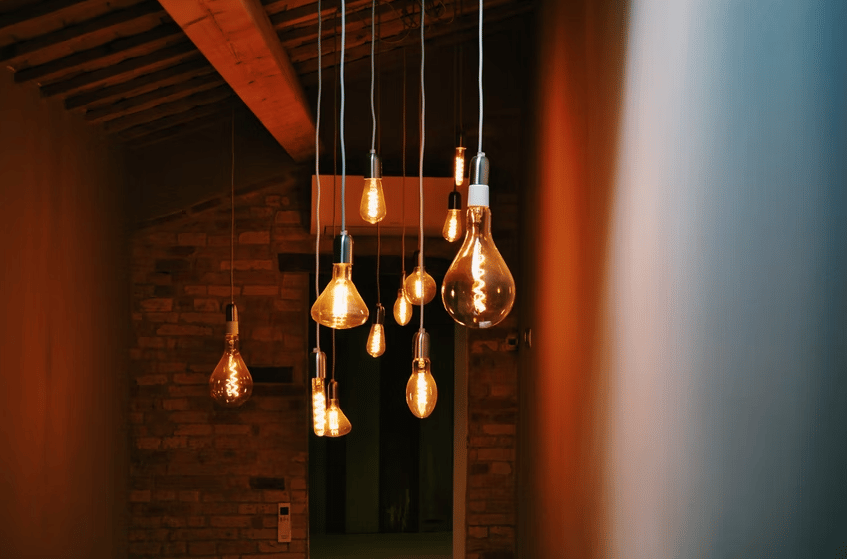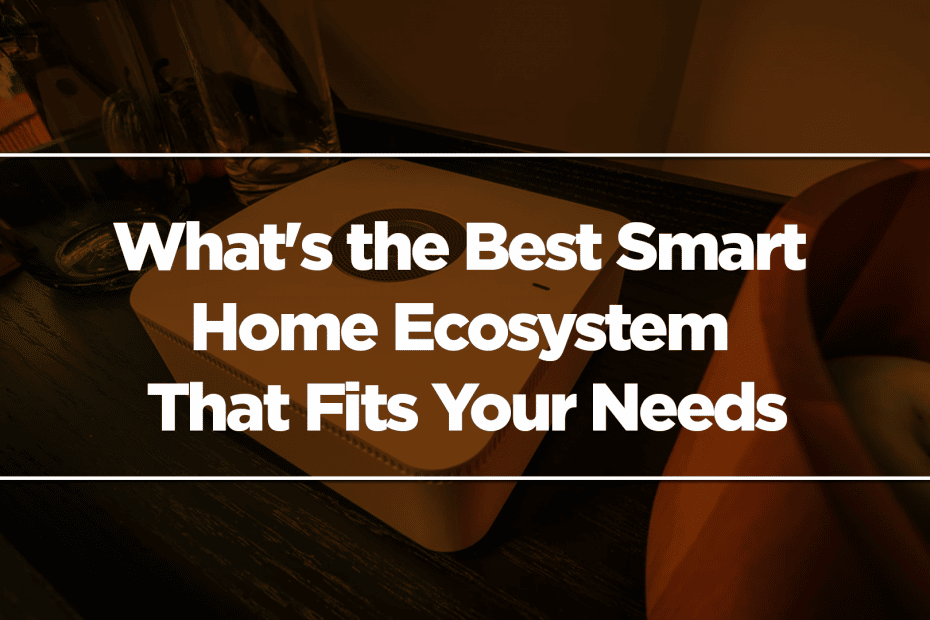How do you bring illumination to your home? In the past, light bulbs, lamps, and maybe light strips are the way to go. Then came smart lighting, which is the same but with more advanced features. But that has once again evolved. Smart lighting companies have become more creative. A new breed of products leveraged the versatility of LEDs, and, thus, unique lighting devices and services were born.

Two standouts are Nanoleaf and Govee. The former is known for its lighting panels that you mount on walls. In its early days, it only made triangle-shaped panels. But the company has grown and is now producing other shapes and more common bulbs and light strips. On the other hand, the latter pushes the boundaries of what smart lights can do with their unique fixtures.
Picking between these two ecosystems could be difficult. But don’t worry. This article should help you determine which one fits your needs better.
Overview
Nanoleaf is popular for its lighting panels that light up the rooms in creative ways. The company also sells more common light bulbs and strips that work in unison with any other product in its catalog. The integration of these devices with a first-class app experience makes them compelling.
Govee has a wide pool of smart lighting products. This company has them all – from bulbs to lamps to lighting panels and lighting strips. The Govee app also offers comprehensive customization options. That allows you to create lighting as perfectly as you envisioned it.
Many tech fans would remember the original 2013 Nanoleaf Aurora. It was an exciting breakthrough of what LED lights could be. And so, Nanoleaf built off that excitement to create new products and improve the devices’ capabilities. That inspired many others and gave birth to companies who want to show their takes on smart lighting. Among those companies is Govee.
Govee had a good start. Offering feature-rich products at an affordable price quickly put it in the spotlight. This company knows how not to waste momentum. It expanded its ecosystem of products and paired them with an app that brings a ton of customization options.
The two companies’ lighting capabilities are impressive. Both their lighting products produce an entire spectrum of vivid, saturated colors. And because they are smart lights, users can control the fixtures’ brightness, hue, saturation, and power state using the companion apps.
Comparison Between Nanoleaf and Govee Smart Features
Nanoleaf and Govee both have excellent hardware and light reproduction. But when talking about smart lights, conversations go beyond hardware. We need to look at their smart features.

The companion app for the two ecosystems does a great job of getting your lights connected and set up. Figuring out a pattern to arrange 9+ fixtures of Nanoleaf panels or Govee Hex Lights can be daunting. But you don’t need to worry because both apps offer preset options or allow you to create your own layout. In the Nanoleaf App, you can even see how your configuration will look on your wall through augmented reality.
Both apps also offer a rainbow of colors and add illusions of movement and more. But the selling point of these smart lights is the scenes. They allow you to set a theme to a group of lights. For example, a scene for the 4th of July will split them into red, white, and blue colors.
That’s basic scenes; there’s another type called dynamic scenes. This type adds movement to the lights; they may go back and forth or up and down. To paint a picture, think of sunsets. A dynamic scene with that theme will gradually dim the lights and shift them from yellow to orange to red. You can use a different dynamic scene if you want nightclub vibes with more vibrant colors and pulsing lights.
Both apps offer basic and dynamic scenes. With Govee, you get so many options it could get overwhelming.
Of course, we also need to talk about voice control. That is one of the main reasons why you would want smart lighting. Both companies’ products are compatible with Google Assistant and Amazon Alexa. However, the control options differ.
Key Differences Between Nanoleaf and Govee
Nanoleaf and Govee are not the same company. So, as you would expect, they have glaring differences.
Nanoleaf’s catalog has fewer lighting products than Govee’s. The latter offers three different light bulbs, 11 indoor LED light strips, six smart lamps, etc.
On the other hand, Nanoleaf has more choices in lighting panels for your wall. And while it now offers light bulbs and light strips, do not expect to find a dedicated smart lamp.
Next, let’s talk about connectivity. Both ecosystems are compatible with the best Wi-Fi routers and offer alternative connection methods.
Nanoleaf includes Thread and the upcoming Matter protocols in its products. These enable better connectivity between devices. Thread is available now, though it is not a widely-used protocol. Matter, on the other hand, is the “would-be industry standard,” but it has not been launched yet.
Govee ensured you can still control your lights even when there’s no Wi-Fi connection. It opted to include Bluetooth as a connectivity option. The problem with that is there’s a limited amount of things Bluetooth can enable.

The last topic we’ll cover is the price of their products. Nanoleaf’s products are expensive. But because they are high-quality, they are worth it. Also, they are future-proof because of Thread and Matter standards support.
In contrast, Goveee’s lights are affordable. The catch is they will not work with many other devices because they’re not Matte-enabled.
So, which one to pick? If you want many fixtures to decorate and light up your smart home, choose Govee. On the other hand, if you want light panels exclusively, Nanoleaf should be your go-to.
And at the end of the day, it boils down to how much you are willing to spend. If you are on a tight budget, you have to choose the cheaper of the two.
